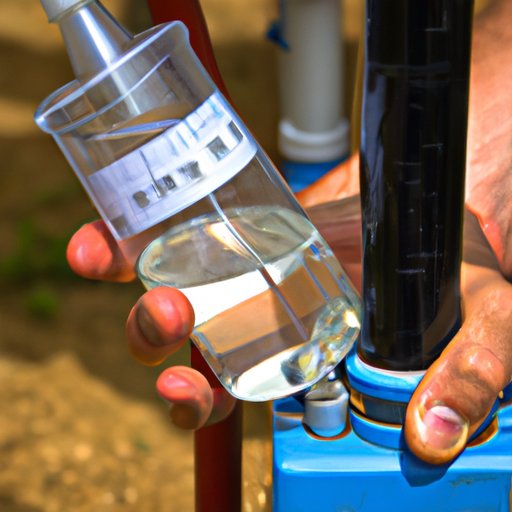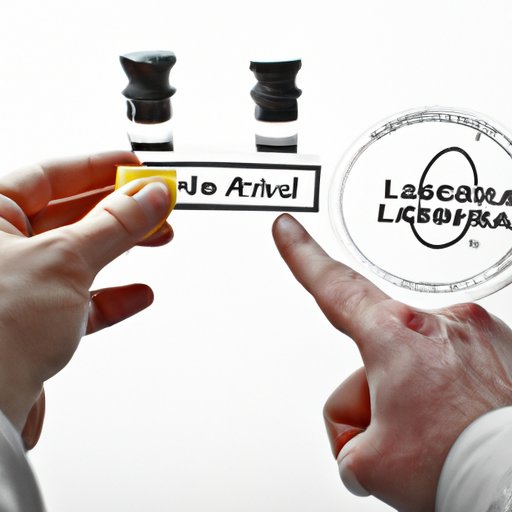Introduction
Testing well water is an important part of ensuring the safety of your drinking water. It is essential to understand applicable regulations and guidelines, identify the types of contaminants commonly found in well water, choose the right type of test, select an accredited laboratory, collect a sample correctly, and take appropriate measures based on the test results.
Investigating Local Regulations & Guidelines
It is important to be aware of any regulations and guidelines that may apply to your particular situation when it comes to testing well water. Depending on where you are located, there may be federal, state, and/or local regulations that need to be taken into consideration. For example, the U.S. Environmental Protection Agency (EPA) has established a set of standards for the quality of drinking water that must be met by public water systems. These standards do not necessarily apply to private wells, but it is still important to familiarize yourself with them.
In addition to federal regulations, many states have their own rules and regulations regarding well water testing. For instance, the California Department of Public Health requires all new wells to be tested for certain contaminants, such as bacteria, nitrates, and arsenic. It is important to research the regulations and guidelines in your area to ensure that you are following the correct procedures.
Researching Contaminants
Once you are familiar with the regulations and guidelines that apply to your specific situation, you should research the types of contaminants that may be present in your well water. According to the EPA, some of the most common contaminants include bacteria, viruses, pesticides, nitrates, and metals such as lead and arsenic. Each of these contaminants can pose serious health risks if consumed over a long period of time.
It is important to understand the potential health risks associated with each type of contaminant. For example, the EPA has identified lead as a contaminant of concern because it can cause developmental delays in children and increase the risk of cardiovascular disease in adults. Furthermore, exposure to high levels of nitrates can cause “blue baby syndrome,” which can lead to respiratory failure and even death in infants.

Determining the Best Test for Your Well Water
There are several different types of tests available for testing well water. The type of test you choose will depend on the specific contaminants you are trying to detect and the regulations and guidelines that apply to your situation. For example, the EPA recommends using a Total Coliform Bacteria Test for detecting bacterial contamination. This test involves collecting a sample of water and then sending it to a laboratory for testing.
In addition to this type of test, there are other tests available that can detect specific contaminants such as nitrates, metals, or pesticides. These tests may require specialized equipment or additional steps, so it is important to research the different types of tests available and decide which one is best for your specific situation.

Choosing an Accredited Laboratory
Once you have determined which type of test is best for your situation, you will need to find an accredited laboratory to analyze the sample. An accredited laboratory is one that has been approved by the EPA or another regulatory agency to perform the type of test you need. It is important to use an accredited laboratory because they are held to higher standards and will provide more accurate results.
The EPA has a list of approved laboratories that can be used for testing well water. You can also contact your local health department for more information about laboratories in your area.
Collecting a Sample of Well Water for Testing
When collecting a sample of well water for testing, it is important to follow all safety protocols and prepare the container properly. The sample container should be thoroughly cleaned and sterilized before use. In addition, the sample should be collected at least 10 feet away from the wellhead to avoid any potential contamination.
The sample should also be collected at a depth that is representative of the water in the well. For example, if the well is 20 feet deep, the sample should be collected at a depth of at least 10 feet. Once the sample is collected, it should be labeled with the date, time, and location and immediately sent to the laboratory for testing.

Implementing Necessary Steps Based on Test Results
Once the test results are received, it is important to analyze them carefully and take any necessary steps to purify the water. The EPA recommends taking corrective action if any of the contaminants exceed the maximum contaminant level (MCL). This could involve treating the water with filtration systems, chemical disinfection, or other methods.
It is also important to regularly test your well water to ensure that it remains safe to drink. This could be done every year or more often depending on the results of previous tests.
Conclusion
Testing well water is an important part of ensuring the safety of your drinking water. It is essential to understand applicable regulations and guidelines, identify the types of contaminants commonly found in well water, choose the right type of test, select an accredited laboratory, collect a sample correctly, and take appropriate measures based on the test results. Regularly testing your well water is the best way to ensure that it remains safe to drink.
(Note: Is this article not meeting your expectations? Do you have knowledge or insights to share? Unlock new opportunities and expand your reach by joining our authors team. Click Registration to join us and share your expertise with our readers.)
